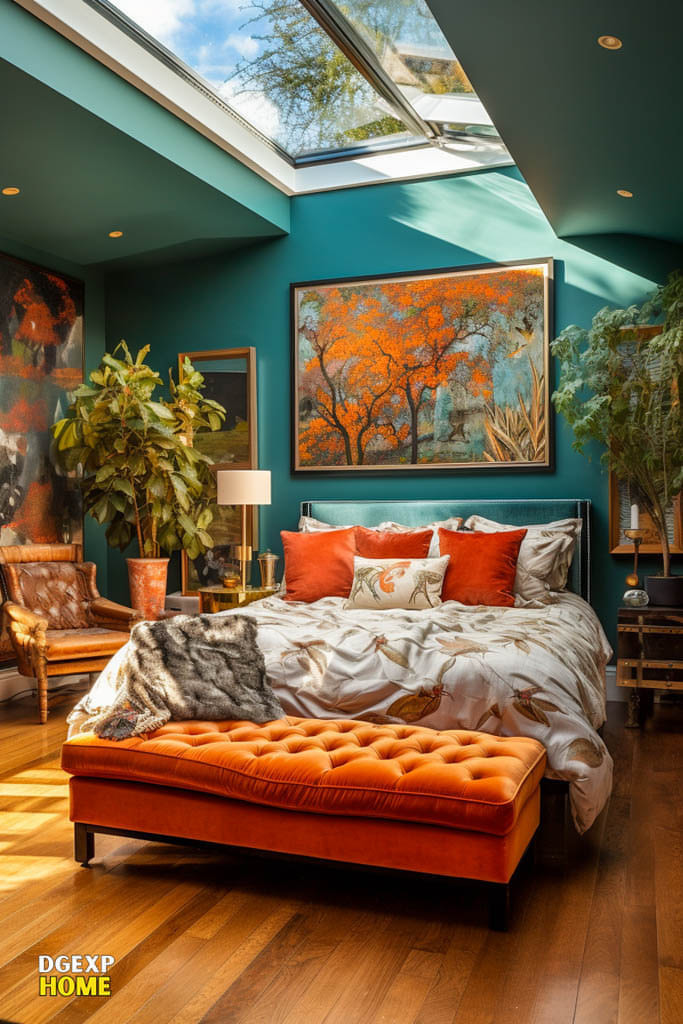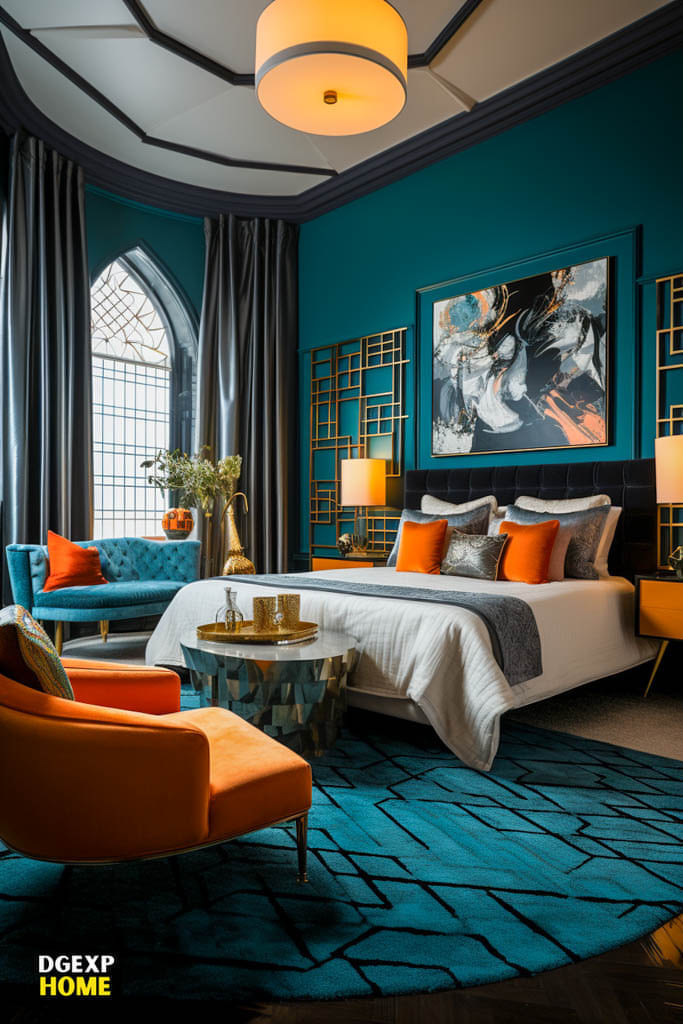Colors have a significant impact on our emotions and the atmosphere of our spaces. Among myriad color combinations, orange and teal stand out for their vibrant and complementary nature. This article will explore how to effectively decorate using these colors, share personal experiences, and provide you with tips and inspiration to create stunning environments.
The Psychology of Orange and Teal
Before diving into practical decorating tips, it’s crucial to understand why orange and teal work well together. Orange is often associated with enthusiasm, creativity, and warmth, while teal exudes calmness and sophistication. This dynamic contrast creates a balanced and inviting atmosphere.
Why Choose Orange and Teal for Your Space?
- Vibrant Aesthetics: The boldness of orange combined with the coolness of teal provides a lively yet soothing color palette.
- Versatility: These colors can be adapted to various styles, from modern to bohemian.
- Seasonal Appeal: Orange brings warmth to winter spaces and energy to summer ones.
Basic Principles of Color Theory
Color theory provides the foundation for successful color combinations. Here are the essential concepts to consider:
Complementary Colors
Orange and teal are complementary colors, meaning they sit opposite each other on the color wheel. This opposition creates visual interest and harmony when used together.

Analogous Colors
In addition to using complementary colors, you can incorporate analogous colors, like coral and turquoise, to add depth and variety.
Incorporating Orange and Teal in Your Decor

Choosing the Right Shades
The first step in decorating with orange and teal is selecting the right shades. Here are some ideas:
- Soft Coral: A pastel version of orange that works beautifully in bedrooms.
- Deep Teal: Adds sophistication and depth to living rooms and dining areas.
- Pumpkin Orange: A bold choice that can energize any space.
- Aqua Teal: A lighter teal that brings a fresh, airy feel to rooms.

Room-by-Room Ideas
| Room | Orange Accents | Teal Accents | Combination Examples |
|---|---|---|---|
| Living Room | Throw pillows, art pieces | Curtains, rugs | Teal couch with orange pillows |
| Kitchen | Appliances, kitchenware | Backsplash, dish towels | Orange stools at a teal island |
| Bedroom | Bedding, wall art | Accent wall, lamps | Teal headboard with orange bedding |
| Home Office | Desk accessories, chair | Wall color, curtains | Orange desk with teal walls |

Decorative Accessories that Highlight Orange and Teal
Using decorative accessories can seamlessly blend orange and teal into your decor. Here are some ideas to get you started:
Artwork
Choose artwork that incorporates both colors to tie the room together. Look for abstract pieces or landscapes that prominently feature orange and teal.

Textiles
When selecting fabrics, opt for cushions, curtains, and throws that highlight your chosen color palette. Mixing patterns can also add an interesting visual element to your space.
Furniture
Consider larger pieces, such as sofas and chairs, in one color while offsetting them with smaller pieces in the other. For example, a teal sofa paired with orange chairs can create a striking focal point.

DIY Projects with Orange and Teal
If you’re feeling creative, there are numerous DIY projects you can undertake to incorporate orange and teal into your home decor:
Customized Throw Pillows
Use fabric paint to create unique designs on throw pillows. Choose a teal base and paint orange designs like geometric shapes or floral patterns.

Accent Wall
Consider painting one wall in your room a bold orange or teal. This can add a pop of color without overwhelming the space.
Artistic Canvas
Create your own art piece by layering orange and teal paint on a canvas. This can serve as a statement piece that embodies your style.
Personalizing Your Space with Orange and Teal
Adding personal elements can make your space feel more inviting and unique. Here’s how I’ve personalized my own areas:
Photos and Memories
In my living room, I framed a series of family photos using teal and orange frames. This not only incorporates my color scheme but also makes the space feel personal and warm.
Travel Souvenirs
I’ve collected several orange and teal items from my travels, such as ceramics and textiles, which now serve as conversation starters in my home.
Common Mistakes to Avoid
While decorating with orange and teal can be rewarding, there are some pitfalls you might want to avoid:
- Overdoing It: Too much of either color can overwhelm a space. Focus on balance.
- Ignoring Proportions: Use one color as a dominant hue while the other acts as an accent.
- Clashing Shades: Ensure that the shades of orange and teal you choose complement each other.
Pros and Cons of Using Orange and Teal
| Pros | Cons |
|---|---|
| Creates a vibrant and inviting atmosphere. | Can be overwhelming if not balanced correctly. |
| Versatile for various decor styles. | May clash with other colors if not chosen carefully. |
| Easy to incorporate with accessories. | Requires attention to light and space size. |
Conclusion
Decorating with orange and teal opens up a world of creativity and personal expression. By understanding color theory, choosing the right shades, and thoughtfully incorporating these colors into your space, you can create an inviting atmosphere that reflects your personality. Remember, your home is a canvas—let your imagination run wild!
Frequently Asked Questions (FAQs)
1. What are some complementary colors to orange and teal?
Other complementary colors include navy blue, coral, and mustard yellow. These colors can also be used to add contrast and depth to your designs.
2. How can I balance orange and teal in my decor?
Use one color as the primary hue and the other for accents. For example, if your walls are teal, consider adding orange accessories like pillows or artwork.
3. Can orange and teal work in small spaces?
Absolutely! Use lighter shades and limit the main color to one or two walls to keep the space feeling open and airy.
4. What styles can I use with orange and teal?
These colors work well with various styles, including modern, bohemian, eclectic, and mid-century. The key is to choose the right shades and accents that fit your overarching theme.
5. How can I add orange and teal during different seasons?
In the summer, you might incorporate brighter, more vibrant shades, while in the winter, you could opt for deeper, more muted hues.